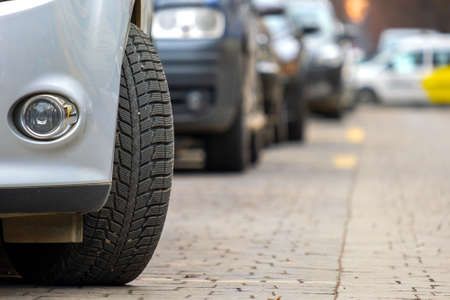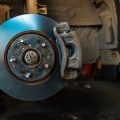1. Understanding the Link Between Tires and Fuel Efficiency
When you think about saving money on gas, you probably picture driving less or buying a fuel-efficient car. But did you know that the type of tires you use can make a big difference in how much fuel your car uses? Let’s break down how your choice of tires affects your car’s gas mileage, and explore the science behind it—especially something called rolling resistance.
What is Rolling Resistance?
Rolling resistance is the force your tires have to overcome to keep moving on the road. Simply put, its how much effort your engine needs to keep the wheels rolling. The higher the rolling resistance, the harder your engine works, and the more fuel it burns.
How Tire Choice Impacts Fuel Efficiency
Different tires are designed with different materials and tread patterns. Some are made for better grip in snow or rain, while others focus on comfort or durability. But when it comes to saving on gas, what matters most is low rolling resistance. Tires labeled as “low rolling resistance” are specially engineered to minimize friction with the road, making it easier for your car to move forward using less energy and fuel.
Tire Features That Influence Gas Mileage
| Tire Feature | Effect on Fuel Efficiency |
|---|---|
| Tread Pattern | Smoother patterns reduce friction, improving gas mileage |
| Tire Material | Special rubber compounds help cut down rolling resistance |
| Proper Inflation | Well-inflated tires lower resistance; underinflated tires waste gas |
| Tire Width | Narrower tires generally offer less resistance than wider ones |
The right set of tires can save you money at the pump over time. Choosing low rolling resistance tires and keeping them properly inflated helps your car run more efficiently and puts less strain on your wallet when it comes to filling up.
2. Choosing the Right Tires for Your Vehicle and Driving Habits
Picking the right tires isnt just about safety—its also a smart way to save on gas. In the U.S., where driving conditions can range from snowy winters in Minnesota to hot summers in Texas, choosing tires that match your car, climate, and daily routes is key for better fuel efficiency.
Consider Your Vehicle Type
The first step is knowing what type of vehicle you drive. Different cars need different tires, and using the wrong kind can hurt your fuel economy. Here’s a quick guide:
| Vehicle Type | Best Tire Option for Fuel Efficiency |
|---|---|
| Sedan/Compact Car | Low rolling resistance all-season tires |
| SUV/Crossover | Fuel-efficient touring tires |
| Pickup Truck | Highway or eco-friendly truck tires |
| Electric/Hybrid Car | Tires made specifically for EVs/hybrids with low rolling resistance |
Think About Climate and Weather Conditions
Your local weather has a big impact on which tires will help you save gas. For example, in colder states like Michigan or Colorado, winter tires are necessary for safety but can slightly reduce fuel efficiency due to their softer rubber. In warmer states like Florida or California, all-season or summer tires will do the trick and help keep your MPG up.
U.S. Climate Zones & Recommended Tires
| Region/Climate | Tire Recommendation | Fuel Efficiency Impact |
|---|---|---|
| Northern States (Cold/Snowy) | Switch to winter tires in snow season; all-seasons rest of year | Slight decrease in winter, better in other seasons with all-seasons |
| Southern States (Warm/Mild) | All-season or summer performance tires year-round | Consistent high fuel efficiency year-round |
| Pacific Northwest (Rainy/Wet) | Tires with strong wet traction and low rolling resistance | Good balance between safety and fuel economy |
| Mountain Regions (Varied) | All-terrain or seasonally appropriate tires as needed | Moderate impact; choose low rolling resistance when possible |
Match Tires to Your Driving Habits
The way you drive also matters. If you mostly commute on highways, look for touring or eco-tires that offer smoother rides and better MPG. If you do a lot of city driving with frequent stops and starts, durable all-season tires with good tread life are best—they’ll help maintain efficiency while lasting longer against wear and tear.
Main Driving Habits & Best Tire Choices
| Driving Style/Condition | Tire Feature to Look For |
|---|---|
| Mainly Highway Driving | Smooth-riding, low rolling resistance touring tires |
| Mainly City Driving | Tougher tread compounds for durability, still with low rolling resistance |
| Mixed/Long Trips | All-season tires with balanced performance |
Look for Fuel-Efficient Tire Labels and Ratings
When shopping for new tires at U.S. retailers like Discount Tire or Costco, check labels for “low rolling resistance” or “eco” branding. Also, review the Uniform Tire Quality Grading (UTQG) ratings listed on every tire—it provides info about treadwear, traction, and temperature resistance so you can compare options easily.
Tire Buying Tips:
- Avoid oversized tires: They may look cool but usually lower your MPG.
- Avoid aggressive off-road treads unless needed: These create more friction and burn more gas.
- Stick to manufacturer recommendations: Check your owner’s manual or inside the driver’s door for ideal tire sizes and types.
- Tire pressure matters: Keep your tires inflated to recommended PSI for top fuel efficiency!
Selecting the right set of tires based on your vehicle type, local climate, and how you drive can make a real difference at the pump—and help keep some extra cash in your wallet each month.

3. Maintaining Proper Tire Pressure to Maximize MPG
Keeping your tires inflated to the right pressure is one of the simplest ways to boost your car’s fuel efficiency and save money at the pump. When your tires are underinflated, they create more rolling resistance, which makes your engine work harder and burn more gas. On the flip side, properly inflated tires help your car roll smoothly, improving your miles per gallon (MPG).
Why Is Tire Pressure So Important for Fuel Economy?
Every time you drive with low tire pressure, you’re not only risking your safety but also wasting fuel. According to the U.S. Department of Energy, for every 1 psi drop in tire pressure across all four tires, you can lose about 0.2% in fuel efficiency. That may sound small, but it adds up over thousands of miles.
Recommended Tire Pressure Check Frequency
To keep things running efficiently, experts in the U.S. recommend checking your tire pressure at least once a month and before long road trips. Changes in temperature—especially during seasonal shifts—can cause tire pressure to fluctuate, so it’s important to be extra vigilant when the weather changes.
| Driving Condition | How Often to Check Tire Pressure |
|---|---|
| Normal daily driving | Once a month |
| Before long road trips | Before every trip |
| During temperature swings (hot/cold) | Twice a month |
| If carrying heavy loads/towing | Before each trip/load |
Quick Tips for Checking Tire Pressure Like an American Pro
- Always use a reliable tire pressure gauge—don’t just rely on eyeballing it.
- Check tire pressure when tires are “cold”—before you’ve driven or after the car has been parked for at least three hours.
- The recommended PSI (pounds per square inch) is usually found on a sticker inside the driver’s door or in your owner’s manual—not on the tire itself.
- If you need air, most gas stations across America have air pumps available for customer use—sometimes free or for a small fee.
By sticking to these routines and keeping your tires at their recommended PSI, youll notice better gas mileage and smoother drives all year round.
4. The Financial Impact: How Tire Choices Can Save You at the Pump
When it comes to saving money on gas, most drivers focus on things like driving habits or car maintenance. But did you know your tires can play a big role in how much you spend at the pump? Let’s break down how switching to fuel-efficient tires can help keep more cash in your wallet, especially if you’re like the average American commuter.
How Tire Efficiency Impacts Gas Costs
Fuel-efficient tires are specially designed to reduce rolling resistance — that’s the friction between your tires and the road. Less friction means your engine doesn’t have to work as hard, so it uses less gas. Over time, this small change can lead to real savings.
Real-World Savings for the Average American
The typical American drives about 13,500 miles per year, with a lot of those miles coming from daily commutes. Let’s see how much you could save by switching from standard tires to low rolling resistance (LRR) tires.
Estimated Annual Savings Table
| Tire Type | Average MPG | Annual Miles Driven | Average Gas Price (per gallon) | Annual Fuel Cost |
|---|---|---|---|---|
| Standard Tires | 28 MPG | 13,500 | $3.50 | $1,688 |
| Fuel-Efficient Tires (LRR) | 29.5 MPG (+5%) | 13,500 | $3.50 | $1,602 |
| Savings Per Year | $86 |
This table shows that just by upgrading to more efficient tires, you could save around $86 every year on gas. That might not sound like a fortune, but over several years (and with gas prices always changing), those savings can really add up!
Bigger Savings for Highway Commuters
If most of your driving is on highways—where tire efficiency matters even more—you could see even better results. Long-distance commuters and rideshare drivers can benefit even more from choosing the right tires.
A Small Change That Pays Off
Choosing fuel-efficient tires is one of those simple upgrades that pays for itself over time. Not only do you save money at the pump, but you’re also reducing your carbon footprint without having to make any changes to your daily routine.
5. Other Tire Tips for Boosting Fuel Efficiency
If you’re looking to squeeze every mile out of your gas tank in the U.S., paying attention to tire maintenance and your driving habits is key. Here are some extra tips that can help you save money on fuel just by taking care of your tires:
Regular Tire Rotations
Tire rotation means moving your tires from one position on your car to another—like swapping the front and back tires. This helps them wear evenly, which keeps your car running smoothly and efficiently. Most experts recommend rotating your tires every 5,000 to 8,000 miles, or whenever you get an oil change.
Wheel Alignment Checks
If your wheels are out of alignment, your tires wear out unevenly and your engine has to work harder—burning more gas. Signs you might need an alignment include pulling to one side or a steering wheel that’s off-center when driving straight. Getting a professional alignment check once a year (or if you hit a big pothole) can keep things on track.
Don’t Forget Tire Balancing
Balancing makes sure weight is spread evenly around each tire and wheel assembly. If your tires aren’t balanced, you’ll feel vibration at higher speeds, and it could cause uneven tire wear and lower fuel efficiency. Balancing usually gets checked during rotations or when new tires are installed.
Quick Tire Maintenance Comparison
| Maintenance Task | How Often? | Fuel Efficiency Benefit |
|---|---|---|
| Tire Rotation | Every 5,000-8,000 miles | Even wear helps reduce rolling resistance |
| Wheel Alignment | Once a year or as needed | Keeps all wheels working together for smooth driving |
| Tire Balancing | When installing new tires or during rotation | Prevents vibration and uneven wear |
| Tire Pressure Check | Monthly | Proper inflation maximizes fuel economy |
Smart Driving Habits Matter Too!
The way you drive can make a big difference in how much gas you use—and how fast your tires wear out. Easy acceleration, gentle braking, and coasting to stops not only save fuel but also reduce stress on your tires. Try to avoid carrying unnecessary weight in your trunk and keep roof racks off unless needed—they create drag that lowers mpg.
Pro Tip: Set Reminders!
Add regular tire checks to your calendar or set reminders on your phone so you never miss a rotation or pressure check. Small steps like these can add up to big savings at the pump over time.


